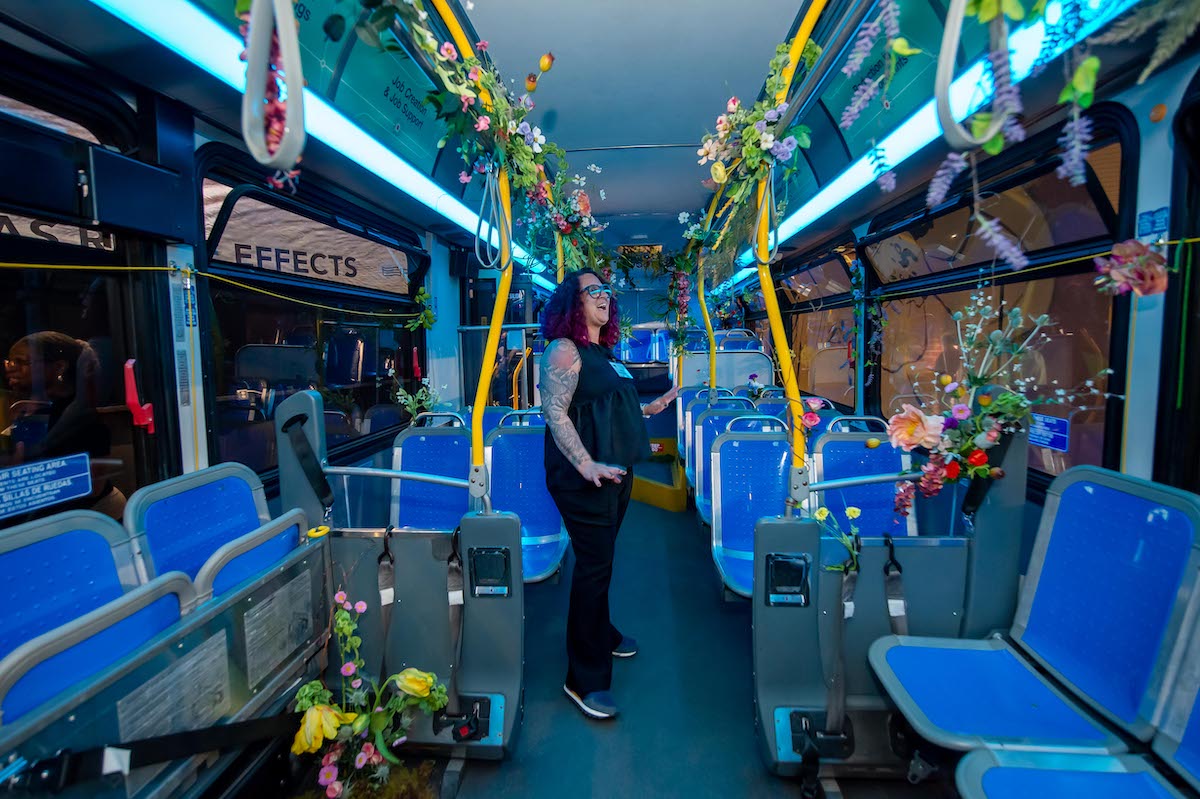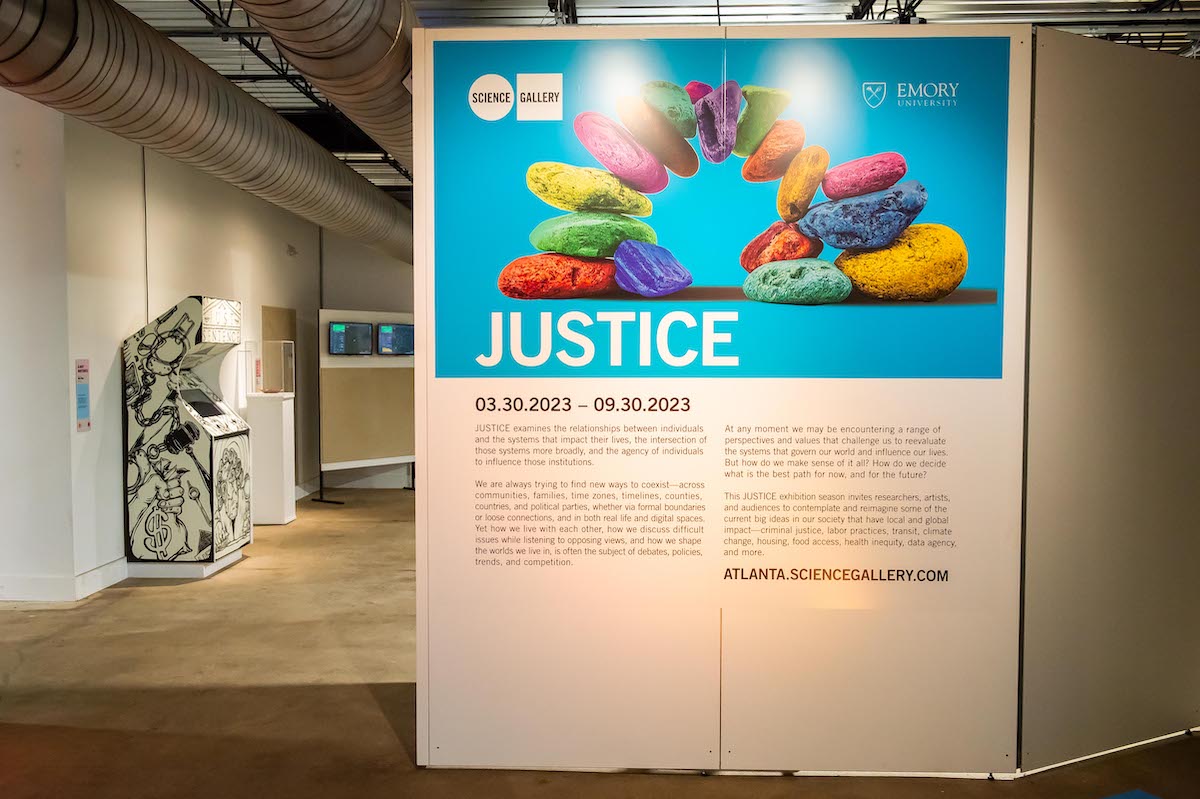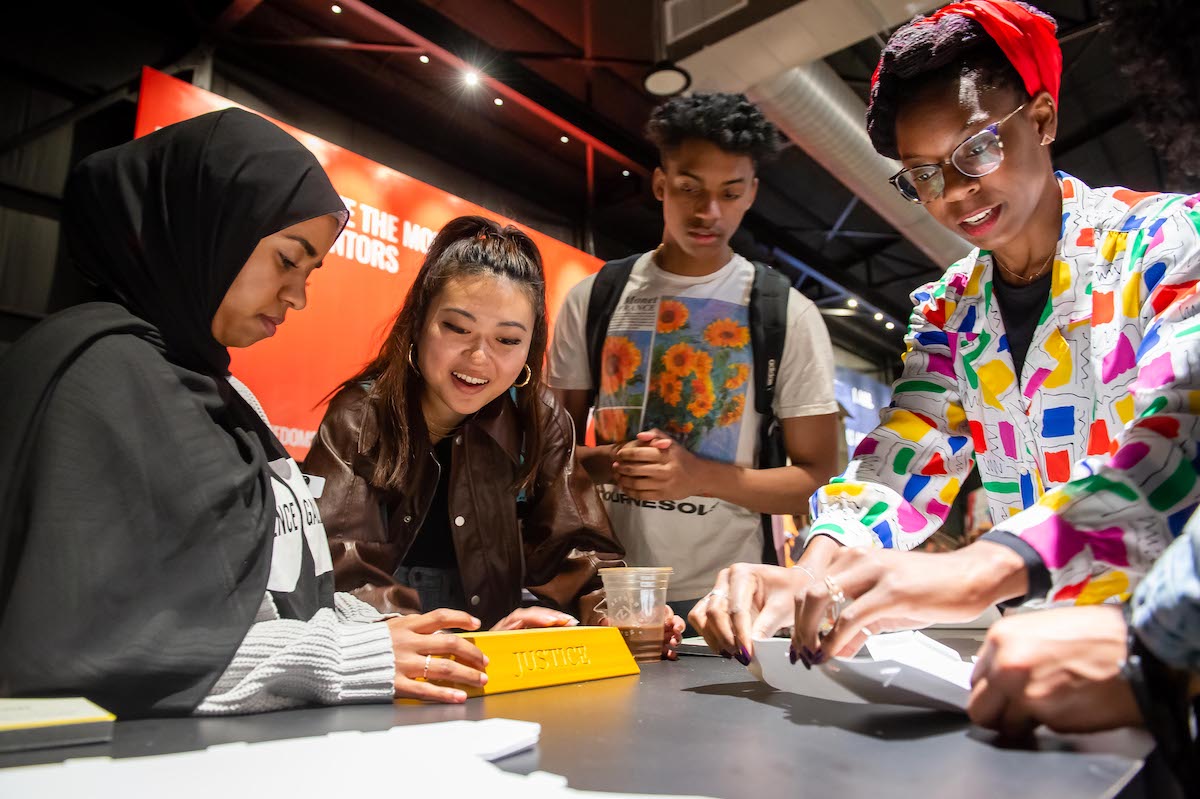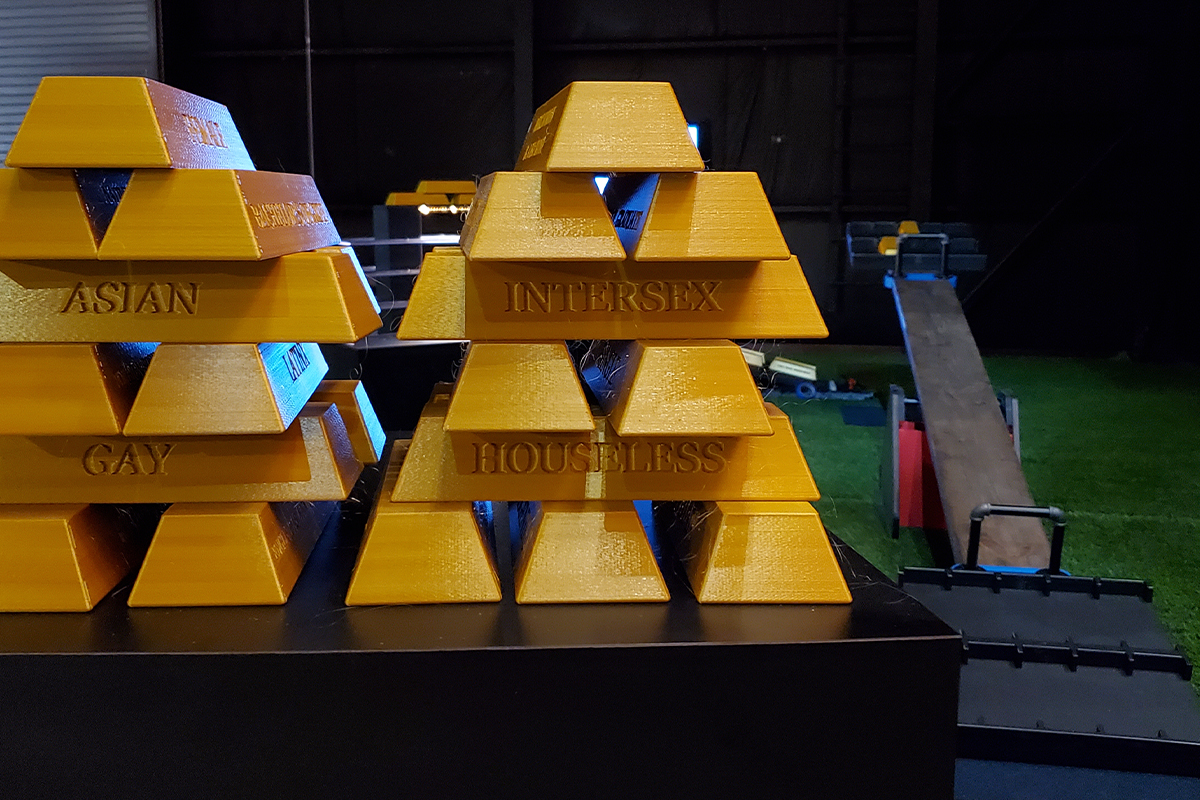What is justice? Who is it for? What does it impact? These are central questions in the “JUSTICE” exhibition at Science Gallery Atlanta, on display at Pratt-Pullman Yards in Atlanta through Sept. 30.
There are numerous complex answers to these questions, but through a variety of evocative installations, videos and displays, curator Floyd Hall is pushing visitors to think more broadly about justice. The exhibition includes original works of art by more than a dozen artists who collaborated with Emory researchers to find answers to pressing questions about cultural preservation, affordable housing, addiction, health care access and even the cost of a cup of coffee.
“The intent of the ’JUSTICE’ exhibition is to empower the individual to do better, act better and advocate for better,” says Floyd Hall, director of Science Gallery Atlanta director and the exhibition curator. “Justice is an individual decision.”
Walking into the gallery, visitors have several opportunities to interact with the pieces.
For her part, photographer and installation artist Stephanie Brown wanted to evoke a sense of play in order for people to learn about class and privilege. “SEESAW” is one of the most unique installations in the exhibition, inviting visitors to take off their shoes, step on a fake, grassy playground and get on a seesaw. However, on Brown’s “SEESAW,” visitors must grab weighted, gold bricks based on their own identities.
Engraved on the bricks are race, gender, sexual orientation, class and other demographics. Different bricks have different weights, depending on how a certain aspect of their identity can affect their chance of socioeconomic mobility.
When placed on the seesaw, the imbalance of the bricks symbolizes the disproportionate struggle faced by certain groups of people. Brown poured over research from the Atlanta Regional Commission and the U.S. Census to see which factors most impact a person’s likelihood for “success” in Georgia. Her goal is for the installation to be able to travel to different cities since she can change the weight of the bricks according to the place.
As the daughter of Jamaican immigrant parents, Brown says, “When I thought about my experience in the U.S. and someone else’s experience, I asked, ‘How do I better understand someone else’s perspective?’ There was something about whether I could make people do the work or introduce the weight of it. How do I pass on that labor and the physicality of the weight to someone?”
After getting on “SEESAW,” visitors are invited to share their experiences and respond to prompts about how it felt to play the game.
“What I do on the seesaw affects the other person,” says Brown. “It’s a back- and-forth exchange.”
The entire exhibition is truly an exchange of thoughts and ideas on how people’s daily decisions create a more just or unjust society.
In “Seed Cabinet,” this idea extends to the environment and food justice. Emory professor Cassandra Quave and herbarium collections manager, Tharanga Samarakoon, collaborated with sustainable local food activists to explore the land and life of seeds. Opening each drawer of the maple card catalog, similar to those in libraries, triggers an informational video to play about the medicinal, nutritional and healing properties of everything from pumpkins to sunflowers.
Atlanta-based artists Max Woo and Marie Dull took the idea of an old-school arcade game and turned it on its head to create “Just Sentence.” In collaboration with Emory Law professor Kay Levine, they created a video game where visitors can decide how much jail time a person should get for a wide range of offenses based on mandatory minimums for certain crimes.
Many Atlantans may be familiar with Sanithna Phansavanh’s murals, which adorn the Atlanta Beltline, Mercedes-Benz Stadium and elsewhere. He and Hall brought a MARTA bus indoors to look at the intersection of transportation and social justice. For “Destinations,” Phansavanh created a custom bus wrap that features the profile of a figure wrapped in a swirl of orange, purple, pink and blue light. Inside the bus, Phansavanh added ambient lighting, flowers and signs that promote peace and positivity as a way of imagining a better bus ride.
“I was thinking about issues affected by public transit, like public health, economic growth, city planning and the environment,” says Phansavanh. “I thought of these as stops on the way to justice. I do a lot of work with botanicals, so I thought about Atlanta as a vibrant ecosystem. The figure represents the public and looking forward to where we need to go. The figure is placed in a vibrant ecosystem that represents a healthy city.”
“The answer to ‘what is justice?’ doesn’t exist in a vacuum,” Hall says. “If we can convene and get people to think differently about space, then that gets us closer to justice.”
From a seesaw’s movement based on people’s identities to a positivity-focused MARTA bus and more, every aspect of the exhibition represents an exchange of thoughts and ideas on how people’s daily decisions create a more just or unjust society.
About Science Gallery Atlanta
Through multidisciplinary collaborations between visual, performance, and media arts and fields ranging from public health, biology, theology, physics, sociology, economics and beyond, Science Gallery Atlanta at Emory University seeks to explore universal themes that impact our communities right here in Atlanta and, through our work, inform global discourse.






